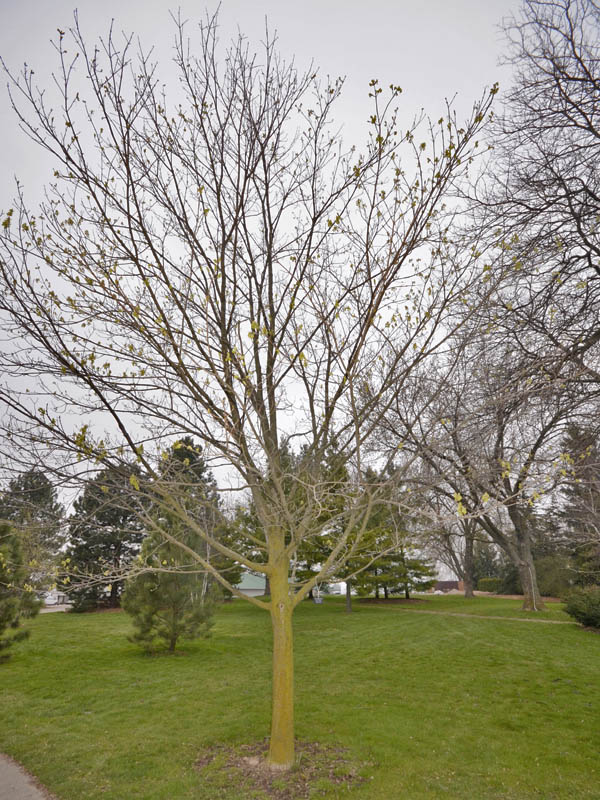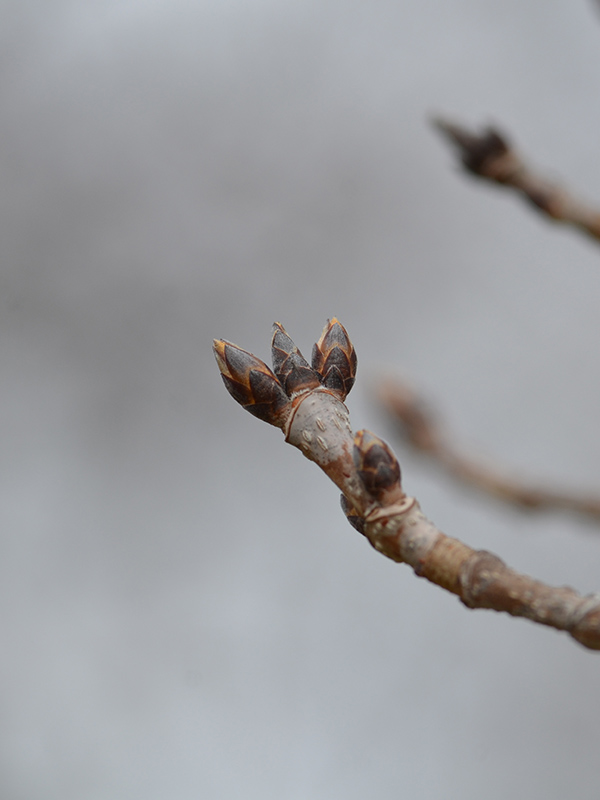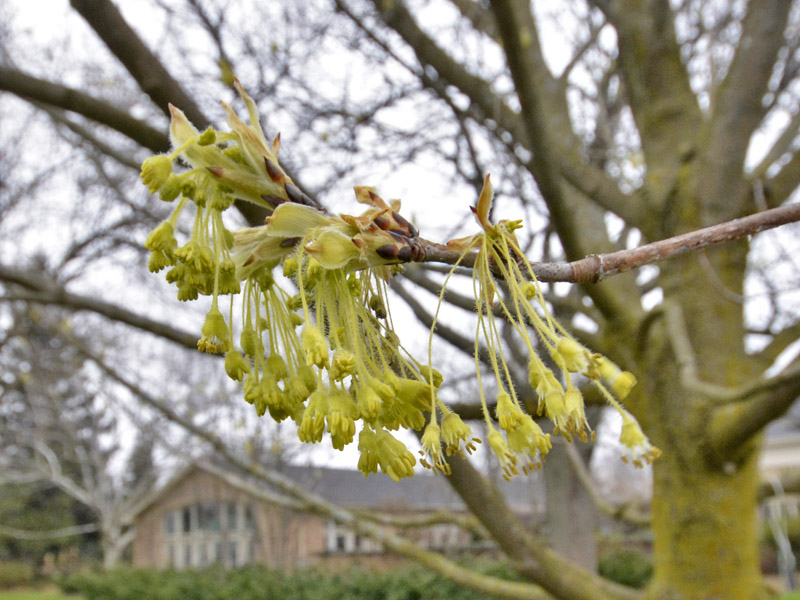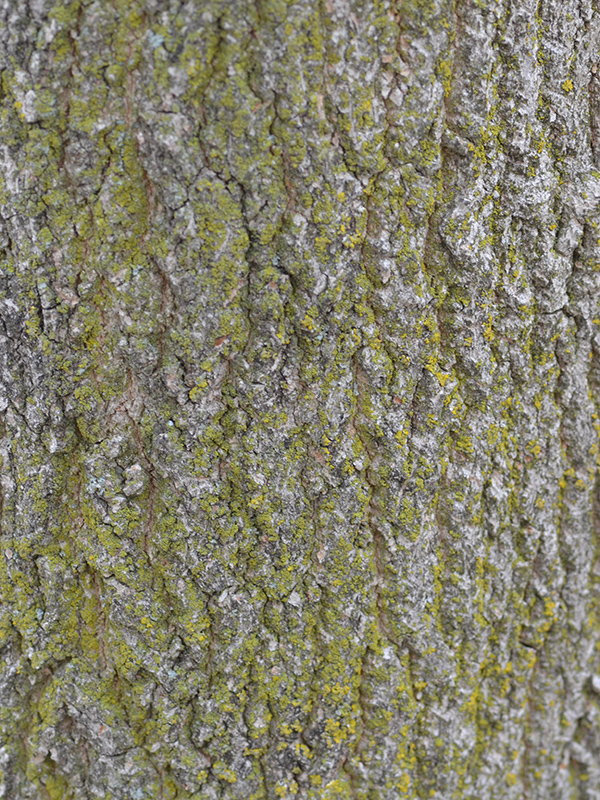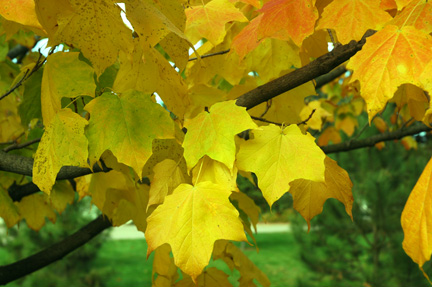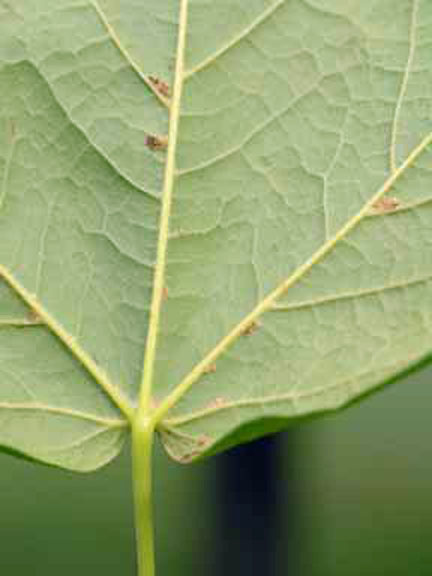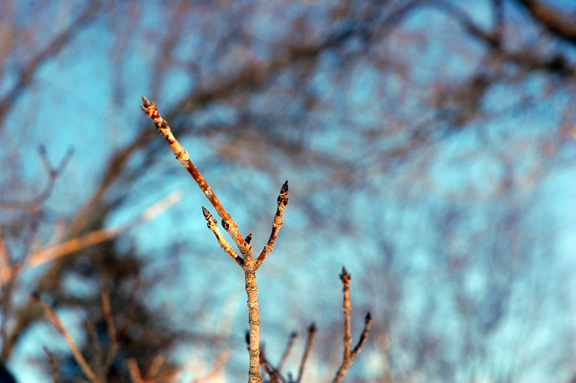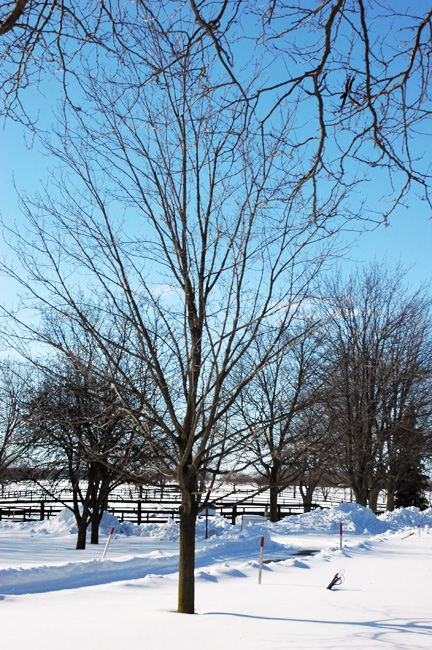
Woody > Acer > Acer saccharum > Acer saccharum subsp. nigrum 'Green Column'
Acer saccharum
ssp. nigrum 'Green Column'
Green Column Black Maple
Origin: Discovered as a seedling sport by William R. Heard in Boone County, Iowa, United States of America in 1959. The patent was issued on May 27, 1975.
Mike's
Opinion


"
As the name implies a narrower form of an often underused or unknown parent species A. saccharum. Green Column is an attractive tree for open landscapes where space permits and where the intensity of it is autumn cloak can be appreciated.
Michael Pascoe, NDP., ODH., CLT., MSc. (Plant Conservation)
"
| Family |
| Sapindaceae (Aceraceae) |
| Genus |
| Acer |
| Species |
| saccharum |
| Cultivar |
| 'Green Column' |
| Category |
| Woody |
| Type |
| Tree (deciduous) |
| Subspecies |
| nigrum |
| Synonyms |
| Acer nigrum 'Green Column' |
| Patent Number |
| PP03,722 |
| Pronunciation |
| USDA Hardiness Zone |
| 4 - 8 |
| Canadian Hardiness Zone |
| 2a - 8a |
| RHS Hardiness Zone |
| H4 - H7 |
| Temperature (°C) |
| -35 - (-7) |
| Temperature (°F) |
| -30 - 20 |
| Height |
| 20 - 25 m |
| Spread |
| 7 - 10 m |
Photographs
Description and Growing Information
Flowering Period
| General Description |
| It is a large tree with ascending branches and quite dense with blooms. In winter the terminal buds are a bright orange colour. Magnificent autumn yellow colour. |
| Landscape |
| Acer saccharin subsp. nigrum 'Green Column' can be used as a street or a lawn tree. Very attractive tree if placed in the correct spot in a landscape since it is a well behaved form with intense autumn colour. Grows easily in medium moisture, but well-drained soils in full sun. |
| Cultivation |
| Can endure sandy, loamy or clay soils, but thrives in soils with a pH of 5.8 - 8. it does not grow well while in compacted or poorly drained soils. A. saccharum subsp. nigrum 'Green Column' does very well in both sun and light shade. |
| Shape |
| Large, upright to rounded columnar shape. |
| Growth |
| Slow |
| ID Characteristic |
| A. saccharum subsp. nigrum looks very similar to Acer saccharum, but the leaves are slightly darker and on the underside where the leaf veins meet it is slightly pillose. Green Column has a narrower from than its parent. |
| Pests |
| Maple tar spot and aphids can be of minor concern, although in my experience I have never seen maple tar spot on the species. Verticillium wilt can pose a serious threat. |
| Habitat |
| Horticultural origin. |
| Bark/Stem Description |
| Bark is dark grey and gets lighter as it matures but with deepening furrows as it ages. |
| Flower/Leaf Bud Description |
| Buda are almost identical to Acer saccharam but may be a little bigger with the terminal bud being slightly orange in colour. |
| Leaf Description |
| The leaves are from 8-14 cm across, palmate, 3 lobed and tend to wilt slightly (appearing as if the tree needs water). Where the leaf vein meets on the underside it is quite pillose but a hand lens might be required to detect this. |
| Flower Description |
| Greenish yellow flower clusters bloom in early spring with the clusters being about 3-5 cm in diameter. |
| Fruit Description |
| Winged samaras start to appear at the end of summer that are about 2.5 cm long. |
| Colour Description |
| Foliage stays dark green through May to early September but turns a beautiful bright yellow to orange colour in the autumn. Greenish yellow flowers appear in spring and can make quite a show. The mature bark is mottled grey. |
| Texture Description |
| A medium textured plant. |
| Propagation |
| Budded on the rootstock of either A. saccharum or A. saccharum subsp. nigrum. |
References
Dirr, Micheal. 'Manual of Woody Landscape Plants'. 6th ed. Champaign, Illinois: Stipes Publishing, 1975. Print.
